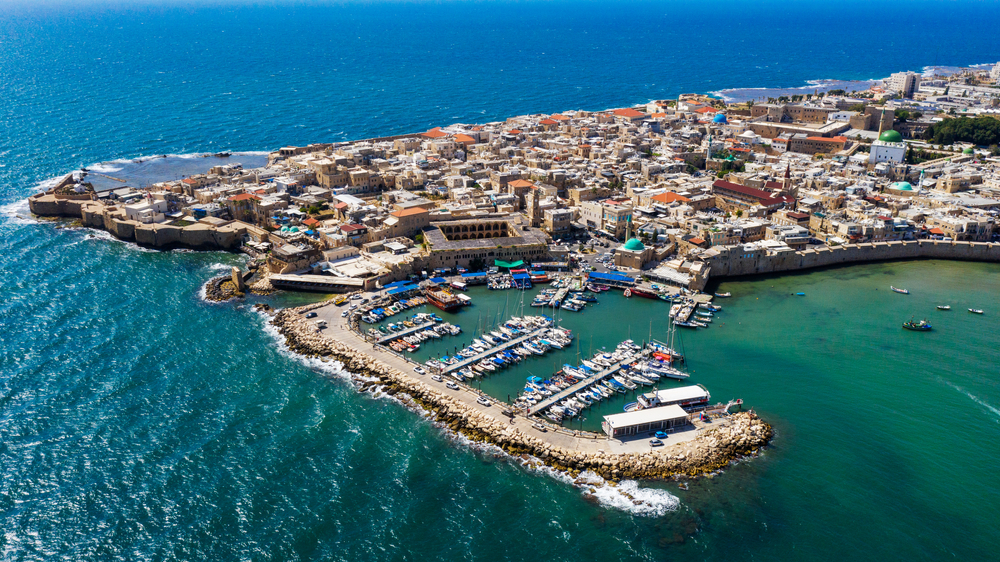A Visit To a Country Trapped in Another Country: Visiting the Golan Heights

Some History on the Region
For thousands of years, the Golan Heights did not have a particularly distinct history. Largely similar to the neighboring districts, the Golan was a far flung outpost of the Roman Empire. Today, ruins of cities like Ceasarea Philippi still show the marks of this period. Eventually the Muslim Caliphates conquered the region. After several attempts at Crusades and some Christian occupation, the region eventually landed in the hands of the Ottomans. If you are familiar with the history of Syria, this would be a pretty normal story. The one notable exception was the presence of the Druze community, a small religious group that splintered from Islam and could be found predominantly in mountaintop communities throughout the Levant.
Once the Europeans got involved, things got messy. The Sea of Galilee became the border between the English regime in Palestine and the French Mandate in Syria, mostly occurring after World War I. In this time, the British became committed to establishing a Jewish State in their Palestinian territory (known as the Balfour Declaration). The ensuing chaos could aptly be called a civil war, where Jewish forces and local Arabs attacked both each other and the British. As the British withdrew in 1948, the Jews declared independence and were promptly invaded by five Arab states. Despite the troop disadvantage, the Jews (with much European weaponry) prevailed and established the State of Israel. Like during the French Mandate, the now independent Syrian Republic bordered the modern State of Israel on the Sea of Galilee, with the Golan Heights landing firmly in Syria.
In 1967, the Arab states collaborated in an attempt to rid the Levant of the State of Israel, attacking the country in a surprise move. The result was an unmitigated disaster lasting only six days. The Egyptian Air Force was completely destroyed. The Israelis had not only thwarted the Arab countries, but also proceeded to control new territories including the West Bank, the Gaza Strip, the Sinai Peninsula, and the Golan Heights. With only limited fighting separating the Syrian capital of Damascus from being occupied and sacked, a truce was called with the State of Israel now controlling the Golan Heights.
Despite several attacks from the Syrians - including during the Yom Kippur War in 1973 - the Israelis have managed to hold onto the Golan Heights. However, the status of the region has always been in question. While most Syrians evacuated the region after the Six Day War in 1967, the Israelis permitted and welcomed the Druze to stay in the Golan Heights. The Druze inside the State of Israel had been loyal members of the country and even fought in the IDF (and still do to this day); perhaps the Golan Druze would also integrate as Israelis. Others suggested that a Druze homeland could be established where Druze from Syria, Lebanon, Israel, Jordan, and other places could create a homeland similar to what the Jews did in historical Palestine.
Instead, an Israeli occupation became the status quo. In the early 2000's, the State of Israel began a long process of deescalation with the Syrian government; the goal was for the State of Israel to return the Golan Heights to Israel in return for the Syrian regime's recognition of the country. Despite talks being nearly successful, an accord was never struck. As a result, the Golan Heights remain a Syrian territory occupied by the State of Israel (according to the UN). While some countries (notably the US under the first Trump administration) now recognize the Golan as Israeli, the land still feels more like Syria than Israel.
Engaging with the Syrian Population
I've had the distinct pleasure of visiting the Golan Heights twice. The first visit revolved around a cultural experience, while the second was more focused on hiking the Golan's beautiful trails.
During the first visit, the group I was with had the opportunity to visit with the elders in Ain Qiniyye. Upon arrival on a rainy day, we were escorted into a large hall which functioned as a public gathering space, a long array of chairs set up in the front of the room for the speakers to sit. Situated behind these chairs were three items: one enormous Syrian flag, a poster of former Syrian president (or dictator depending who you ask) Hafez el-Assad, and another poster of current Syrian president Bashar al-Assad. It was abundantly clear that - while no formal border had been crossed - this community felt strongly Syrian (and strongly loyal to the Syrian regime). Add in the TV reporter from Syria's national news agency ready to ask Americans what they thought about the US recognition of the Golan and it was very much Syria.
Along most of the Druze villages in the Golan, there are many vantage points to see over the de facto border into Syria proper. On both of my visits, the groups with which I visited made a deliberate intention to visit different lookouts to look over into Syria, as though this is a must do for the local experience. In villages like Majdal Shams, houses have views directly into Syria, where army outposts can be seen quite visibly.
But probably looking into another country was not a goal of your visit. You're probably thinking "maybe there's food". And food there is. The Druze communities I have visited - both inside the State of Israel proper and in the Golan - have some of the best food I have ever eaten. On my first visit, I was able to dine with a Syrian lady who ran a catering company - quite an unusual feat for a woman to own her own business in this community. The grape leaves were among the best I have ever tasted (and I love grape leaves). On my second visit, the group I was with stopped in the village of Mas'ada, essentially to grab some snacks and use the bathroom before leaving for the day. I was told by some of my companions to order a flatbread cooked on top of a round drum called a saj. The fresh bread was then covered in a light cheese and filled with za'atar, a spice blend mostly made of thyme. Such a snack was so so delicious, a light but filling blend that was the perfect end to a day of hiking.
Visiting the Sights of the Golan Heights
The Golan is a fascinating place to visit for all of those interested in nature, history, and culture. The snowcapped peaks of the mountains paired with the green valleys and dramatic waterfalls are the main draw for Israelis, Arabs, and foreign tourists coming to the Golan. While there are no shortage of hiking paths throughout this relatively rural slice of the Middle East, the best hiking sits in the Northern half of the Golan. Banias Waterfall and the areas protected by Nahal Hermon Reserve are the best spots for a walk in nature if you ask me. The one important thing to keep in mind are the large number of land mines in the Golan. Almost all hiking paths have been cleared of these relics from the previous wars between Israel and Syria. However, straying from the path means you may wander into an undetonated explosive. Make sure to follow the trail - and all problems will be avoided.
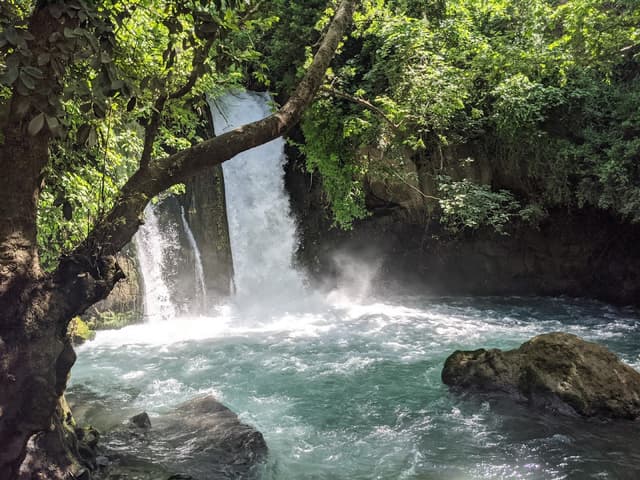
If history is what you are looking for, the Golan delivers here too. Situated along the old trade routes connecting cities like Jaffa, Jerusalem, and Akko to Damascus, many outposts were constructed. Among the thousands of years of ruined villages around, my favorite site in the Golan is Nimrod Caste (also called Subeiba Castle prior to the 1800's). The castle dates back millennia when the Greeks, Romans, and even the Crusaders more recently had various fortifications on the site. The majority of the site today dates back to the Ayyubid dynasty based in Damascus, who ruled large parts of the Levant and Arabian peninsula. Large parts of the fortress has been excavated or restored, and walking among the ramparts was one of the coolest experiences I have had. "Subeiba" in Arabic refers to a large cliff, which in the Golan is always accompanied with great views. From the highest points of the castle you can see all the way to the snowcaps of Mount Hermon (or Jabal al-Sheiyoukh in Arabic) to deep into the Galilee region.
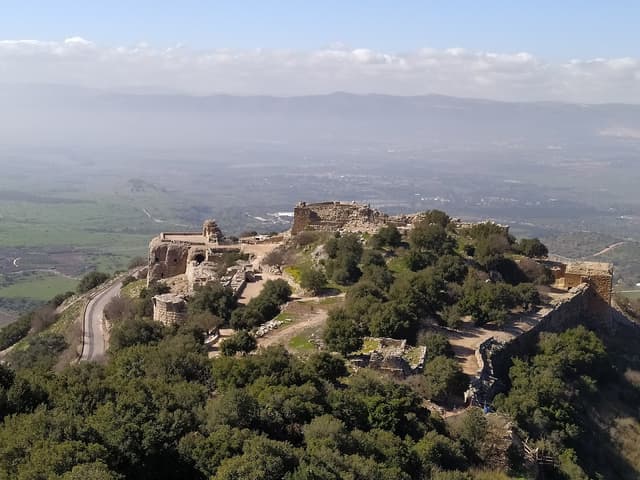
The Golan features one of the only easy forays into authentically Syrian territories for the regular traveler. With that comes a plethora of unique opportunities to see Syrian life in traditional Middle Eastern villages. Many of these experiences are challenging to do outside of large groups (as they often require large orders of food). However, the rustic cooking of the Little Kitchen in Mas'ada and Naseeba Druze Chef in Buq'ata (where I dined while in the Golan) may be the highlight of your trip. When visiting these establishments, you will be greeted with story telling, hospitality, and of course delicious food. Reach out and make sure they can serve you as reservations are a must at these establishments. Can't visit with a larger group? Bab Sharqi in Majdal Shams is a delicious cafe that allows you to eat at an authentic Syrian restaurant with views of the Syrian hills all around.
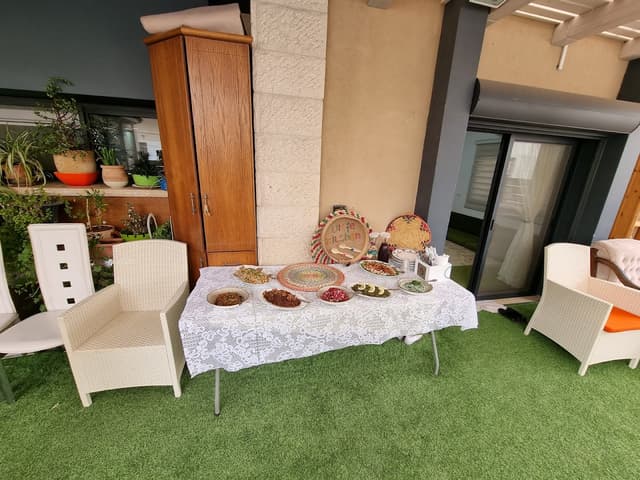
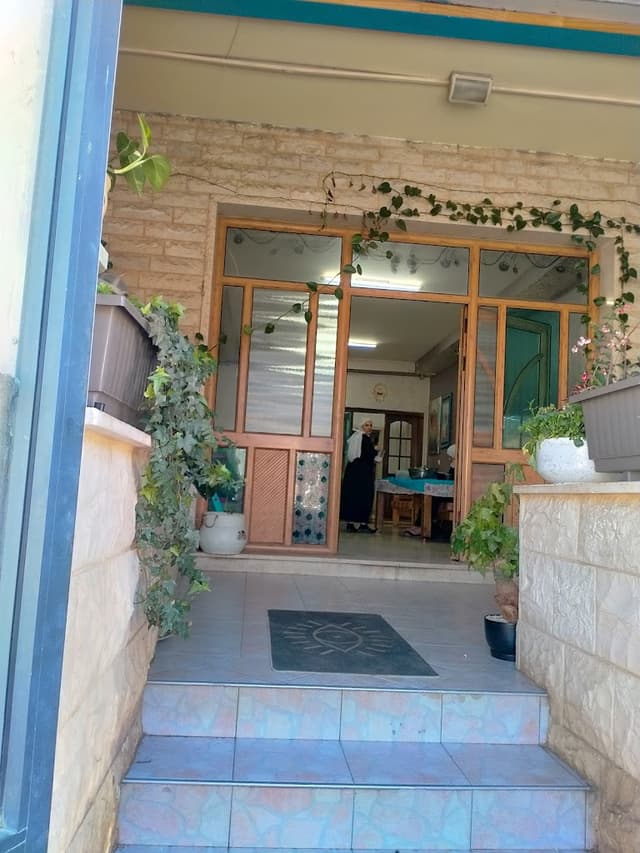
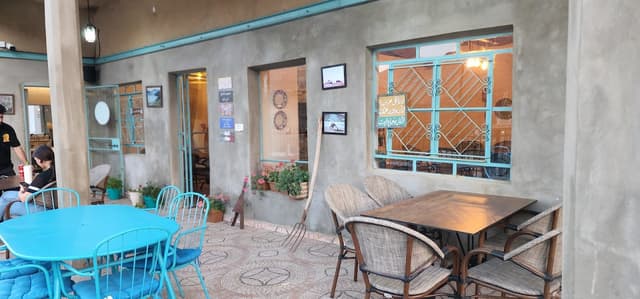
Of course, I've focused on a lot on the Druze population within the Golan Heights. However, it is impossible to avoid the Israeli administration while in the region. The nature reserves and historic sites are administered by Israel's national park service. The majority of the population in the Golan identify as Jewish Israeli. And Israelis have set up their own businesses here in the region. The most notable establishment has to be the ski operation on top of Mount Hermon. The only place inside Israeli administered land where skiing can take place, the single road to the top of the Hermon is regularly flooded with Israelis eager to ski in wintertime. The area is still fun for a taste of something different while in Israel. Additionally, further south around settlements like Qatsrin, Israelis have opened a number of wineries, showing off the unique mountainous terroir of the Golan through wine. Of course, be contentious. Many prefer not to visit Israeli businesses in the Golan, as they believe this perpetuates to occupation in the region. If this makes you uncomfortable, stick to businesses in the four Druze villages. Otherwise, the Jewish settlements and sites around them add a different dimension to your Golan adventure.
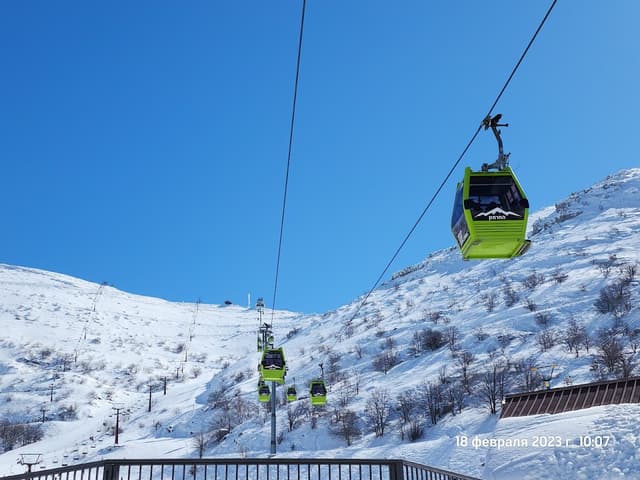
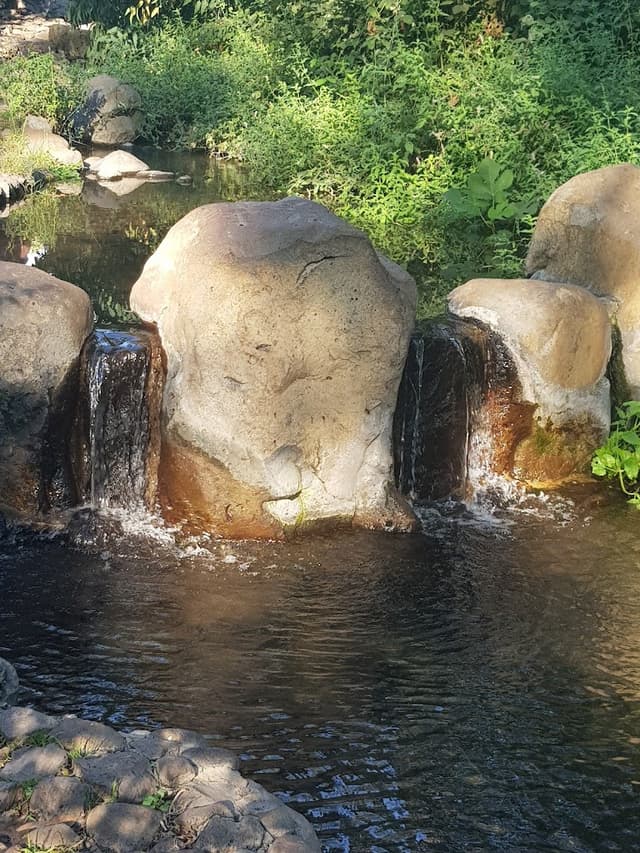
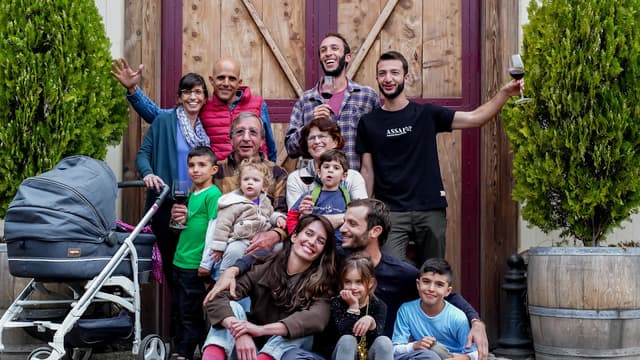
The one last consideration for visiting the Golan is when to visit. If skiing the Hermon is on your list of must-do things, the answer is obviously winter. However, all other seasons are relatively pleasant in the Golan. Fall brings a delicious apple harvest, and summer offers slightly cooler temperatures than in the nearby Galilee region. But I always suggest a late spring visit to this region. Once the rain falls throughout winter and spring, the region becomes beautiful verdant, making for better scenery viewing. If you time your visit for the month after the rains end - typically starting late March but occasionally early April - you will have beautiful temperatures in the 70's F/20 C range, full sun with no rain, and still lots of green scenery. However, the Golan is good for all seasons.
What's Next for the Golan
During the first Trump administration, several controversial moves within US-Israeli relations occurred. The most notable happening was the opening of a full US embassy in Jerusalem - the de facto capital of Israel - instead of in Tel Aviv - the internationally recognized capital. Part of these maneuvers included recognition of the Golan as Israeli sovereign territory, effectively ignoring the international consensus that this land was Syrian land.
Despite most Democrats being against these moves, the Biden administration have not reversed either of these actions. It is unlikely for this to change anytime soon. Without the weight of the United States government on the State of Israel, I cannot imagine anything in the Golan will change. Over the last fifty or so years, the Israelis have opened up a path for citizenship for the Golan Druze, hoping they will integrate the way the Druze around Haifa have. However, the number of Golan Druze who have obtained citizenship remains in the below 1,000, with no real incentive for this to change.
For Syrians and the Golan Druze, the status of the Golan Heights will remain a sore point. The Druze maintain a concept called taqiyya, a doctrine that allows individuals to hide beliefs and blend within society in order to avoid persecution. While there is certainly a strong sentiment of taqiyya when living under occupation, the one certainty is the Golan Druze will continue to hold onto their traditions. They will continue cultivating apples and calling the hills their home. And they will almost certainly continue to preserve a small corner of Syria under Israeli administration.
Check out other guides on Israel/Palestine!
Mark provides all sorts of info to help your travel needs! I offer wonderful free resources, on the Middle East, including aguide on Akko, West Bank day trips, and Jerusalem's Mechane Yehuda Market! I also have paid guides like the Ultimate Guide to Jordan, your one stop shop for everything you could need. This includes specific travel itineraries and planning services. Please reach out if you have any questions or would like customized travel services - you can reach me via my blog (link below) or through my Thatch page!
The home for unique & authentic travel

